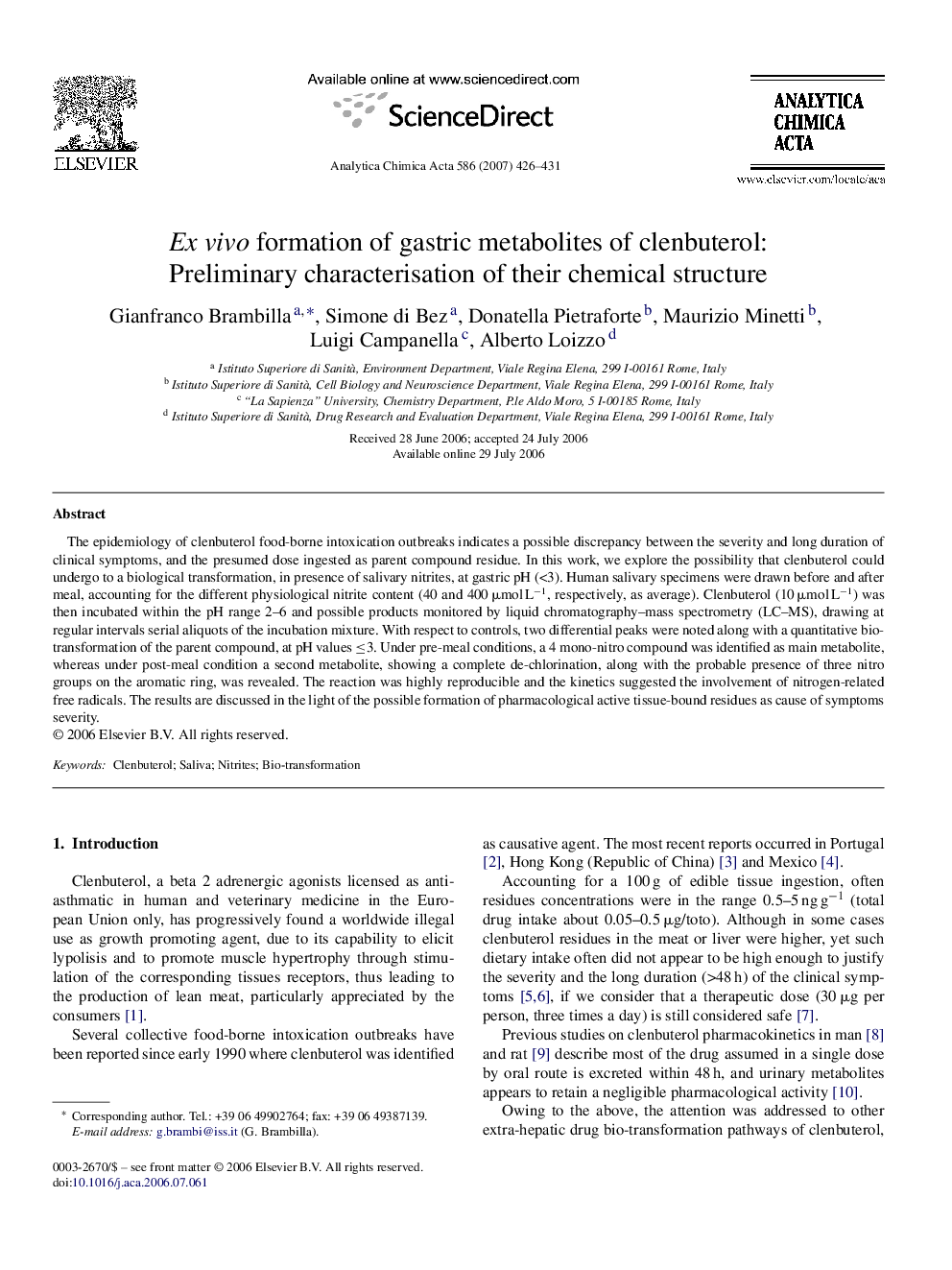| Article ID | Journal | Published Year | Pages | File Type |
|---|---|---|---|---|
| 1170725 | Analytica Chimica Acta | 2007 | 6 Pages |
Abstract
The epidemiology of clenbuterol food-borne intoxication outbreaks indicates a possible discrepancy between the severity and long duration of clinical symptoms, and the presumed dose ingested as parent compound residue. In this work, we explore the possibility that clenbuterol could undergo to a biological transformation, in presence of salivary nitrites, at gastric pH (<3). Human salivary specimens were drawn before and after meal, accounting for the different physiological nitrite content (40 and 400 μmol Lâ1, respectively, as average). Clenbuterol (10 μmol Lâ1) was then incubated within the pH range 2-6 and possible products monitored by liquid chromatography-mass spectrometry (LC-MS), drawing at regular intervals serial aliquots of the incubation mixture. With respect to controls, two differential peaks were noted along with a quantitative bio-transformation of the parent compound, at pH values â¤3. Under pre-meal conditions, a 4 mono-nitro compound was identified as main metabolite, whereas under post-meal condition a second metabolite, showing a complete de-chlorination, along with the probable presence of three nitro groups on the aromatic ring, was revealed. The reaction was highly reproducible and the kinetics suggested the involvement of nitrogen-related free radicals. The results are discussed in the light of the possible formation of pharmacological active tissue-bound residues as cause of symptoms severity.
Related Topics
Physical Sciences and Engineering
Chemistry
Analytical Chemistry
Authors
Gianfranco Brambilla, Simone di Bez, Donatella Pietraforte, Maurizio Minetti, Luigi Campanella, Alberto Loizzo,
